Global Change Biology: Changing patterns of the East Asian monsoon drive shifts in migration and abundance of a globally important rice pest
(东亚季风模式变化导致一种全球重大水稻害虫的迁飞和丰度改变)
在东亚地区,包括害虫和益虫在内的多种昆虫在数百公里的范围内进行风媒迁飞(迁徙),而气候引起的大规模大气环流系统的变化正在影响风场和降水带,进而改变其迁飞模式。本研究以中国华东地区水稻重大害虫褐飞虱(BPH, Nilaparvata lugens)为研究对象。褐飞虱在温带东亚地区不能越冬,那里的虫害是由来自热带地区的几波春季或夏季的迁飞种群引发,而以丰富的降水和偏南风为特点的东亚夏季季风对这些向北迁飞的褐飞虱至关重要。本研究基于1978-2019年全国300多个站点的稻飞虱监测数据和相关气象资料,研究发现:自2001年以来,影响我国夏季盛行气流和降水时空分布的重要大气环流系统西太平洋副热带高压(简称副高)强度显著增强、位置明显西移。受此影响,中国长江以南地区夏季西南气流显著变弱、降水增加,江淮地区降水显著减弱,不利于褐飞虱的远距离迁飞,致使华南地区7月迁出褐飞虱的迁飞距离显著变短,长江下游地区褐飞虱迁入量显著下降。以往研究认为:副高的位置及强度与长江下游地区褐飞虱迁入量及其后期发生程度呈显著相关。但本研究发现:由于褐飞虱迁飞模式的转变,长江下游不再成为褐飞虱7月份迁飞的主降区,副高强度与长江下游地区褐飞虱迁入量的相关关系也不复存在。综上,本研究揭示了全球气候变化(变暖)背景下降水和风场条件的变化致使我国重大迁飞性害虫褐飞虱迁飞模式发生转变,为迁飞害虫的准确测报和科学防控提供了重要理论参考。
标注省份名称和主要河流的华南和华东研究区域地图
Map of the study area in South and East China, with provincial names and major rivers indicated.
三个红色三角形代表华南北部地区(NSC, 蓝色椭圆形)的植物保护站,以其灯光诱捕器的捕获量来评估该地区迁飞入的飞虱。5个蓝色圆点表示用于评估7月份进入长江下游地区(LYRV, 黄色椭圆形)迁飞昆虫的植物保护站诱虫灯位置。红圈所示的柳州被定义为计算迁飞(迁徙)距离的假设起点。地图线仅用以划定研究区域,而非国家边界线。
Map of the study area in South and East China, with provincial names and major rivers indicated. The three red triangles represent the plant protection stations (PPS) in the northern South China (NSC) region (the blue oval), whose light trap catches were selected to assess emigration from this region. The five blue dots indicate the locations of PPS light-traps used to assess immigration into the Lower Yangtze River Valley (LYRV) region (the yellow oval) in July.Liuzhou, indicated by the red circle, was defined as the hypothetical starting point for calculating migration distance. Map lines delineate study areas and do not necessarily depict accepted national boundaries.
1978-2000年和2001-2019年两个时间段内,研究区域内各植物保护站灯诱器的褐飞虱BPH平均5日和年均捕获量
Mean 5-day and annual catches catches catches of BPH for each selected PPS light-trap in the study regions during the two time periods:1978-2000 and 2001-2019.
A图为长江下游地区(LYRV)地区各植物保护站灯诱器对褐飞虱的平均5日捕获量。灰色阴影条表示主要迁入期。B图为1978-2000年(粉红色阴影)和2001-2019年(蓝色阴影)两个时间段内两个研究区域(NSC和LYRV)褐飞虱年均捕获量。趋势线(实心蓝色线条)表示任意时间段/位置的显著线性趋势。两个时间段之间的显著性差异在箱线图上显示:ns表示不显著;*表示p < 0.05; **表示p < 0.01。
Figure A: Mean 5-day catches of BPH for each selected PPS light-trap in the LYRV region. The grey shaded bar indicates the major immigration period; Figure B: Mean annual catches of BPH in the two study regions (NSC and LYRV) during the two time periods:1978-2000 (shaded in pink) and 2001-2019 (shaded in blue). Significant linear trends in any time period/location are indicated by trend lines (solid blue lines). Significant differences between the two time periods are indicated above the boxplots: ns = not significant; * indicates p<0.05; ** indicates p<0.01.
褐飞虱迁飞距离缩短
The migration distance of BPH has decreased.
(a)和(b)部分显示了沿迁飞(迁徙)路线的229个站点的5日BPH捕获量与假设的迁飞起点(柳州市,东经109.75°,北纬24.30°,NSC地区)之间的关系。(a)图为各时间段褐飞虱捕获量与距柳州距离的关系。在1978 – 2000年,线性模型的斜率(蓝线)比2001-2019年小,表明褐飞虱在第一阶段比第二阶段迁飞距离更远。在一般加性模型(黑线)中,第一阶段在迁飞距离1000 km左右出现峰值,对应LYRV,而在第二阶段没有。(b)图为(a)中拟合的线性模型的斜率值,但为每一年单独建立。从2001年起,每年的斜率通常都比较陡峭,而且第二时期的总体平均值明显比第一时期陡峭。(c)图为基于1978年-2019年300多个县级植保站的数据,BPH集中区341个诱捕站的纬度日期横截面的相对二维分选核密度(每5日单位纬度的诱捕器相对密度)。若任意5日内捕获的BPH数量大于或等于BPH90th(即当年该时期的第90百分位值),则将该任意5日内的BPH诱捕站定义为褐飞虱”集中和登陆区”。
Parts (a) and (b) show the relationship between 5-day BPH catches at each of the 229 stations along the migration route and the distance from the hypothetical start point of the migration (Liuzhou City, 109.75°E, 24.30°N, in the NSC region). The migration distance of BPH has decreased. Figure (a): The relationship between BPH catches and distance from Liuzhou in each time period. In 1978-2000, the linear model (blue line) had a shallower slope than in 2001-2019, indicating that BPH migrated further in the first period than the second period. In the general additive model (black line), there was a peak around the migration distance of 1000 km in the first period, corresponding to the LYRV, that was absent in the second period. Figure (b): The slope values of the fitted linear model from (a), but built separately for each year. The slopes were typically steeper in each year from 2001 onwards, and the overall mean values were significantly steeper in the second period than in the first period. Figure (c): Latitude date cross-section of the relative 2-D binned kernel density of the 341 trapping stations (relative density of traps per unit of latitude for each 5-day period) in a BPH concentration zone, based on the data from more than 300 county plant protection stations between 1978 and 2019. Any given BPH trapping station in any 5-day period was defined as a planthopper ‘concentration and landing zone’ if the number of BPH in the 5-day catches was greater than or equal to the BPH90th (i.e., the 90th percentile value in that period of that year).
Numerous insects including pests and beneficial species undertake windborne migrations over hundreds of kilometers. In East Asia, climate-induced changes in large-scale atmospheric circulation systems are affecting wind-fields and precipitation zones and these, in turn, are changing migration patterns. We examined the consequences in a serious rice pest, the brown planthopper (BPH, Nilaparvata lugens) in East China. BPH cannot overwinter in temperate East Asia, and infestations there are initiated by several waves of windborne spring or summer migrants originating from tropical areas in Indochina. The East Asian summer monsoon, characterized by abundant rainfall and southerly winds, is of critical importance for these northward movements. We analyzed a 42-year dataset of meteorological parameters and catches of BPH from a standardized network of 341 light-traps in South and East China. We show that south of the Yangtze River during summer, southwesterly winds have weakened and rainfall increased, while the summer precipitation has decreased further north on the Jianghuai Plain. Together, these changes have resulted in shorter migratory journeys for BPH leaving South China. As a result, pest outbreaks of BPH in the key rice-growing area of the Lower Yangtze River Valley (LYRV) have declined since 2001. We show that these changes to the East Asian summer monsoon weather parameters are driven by shifts in the position and intensity of the Western Pacific subtropical high (WPSH) system that have occurred during the last 20 years. As a result, the relationship between WPSH intensity and BPH immigration that was previously used to predict the size of the immigration to the LYRV has now broken down. Our results demonstrate that migration patterns of a serious rice pest have shifted in response to the climate-induced changes in precipitation and wind pattern, with significant consequences for the population management of migratory pests.
编辑:张颖
原文信息:Lv H, Zhai M Y, Zeng J, et al. Changing patterns of the East Asian monsoon drive shifts in migration and abundance of a globally important rice pest[J]. Global Change Biology, 2023.



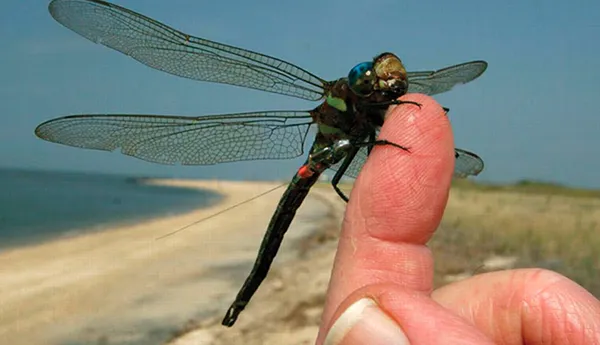


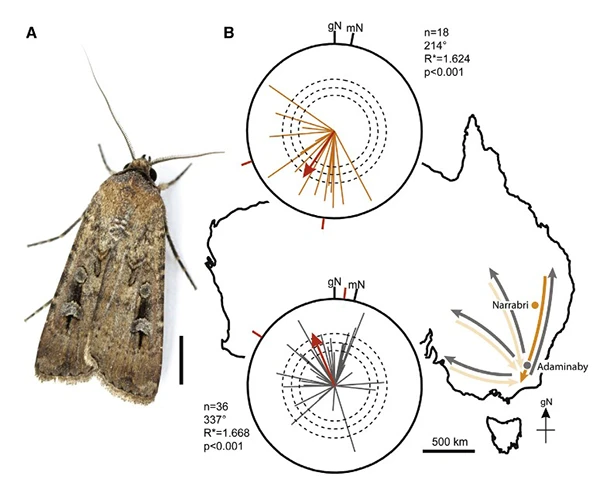
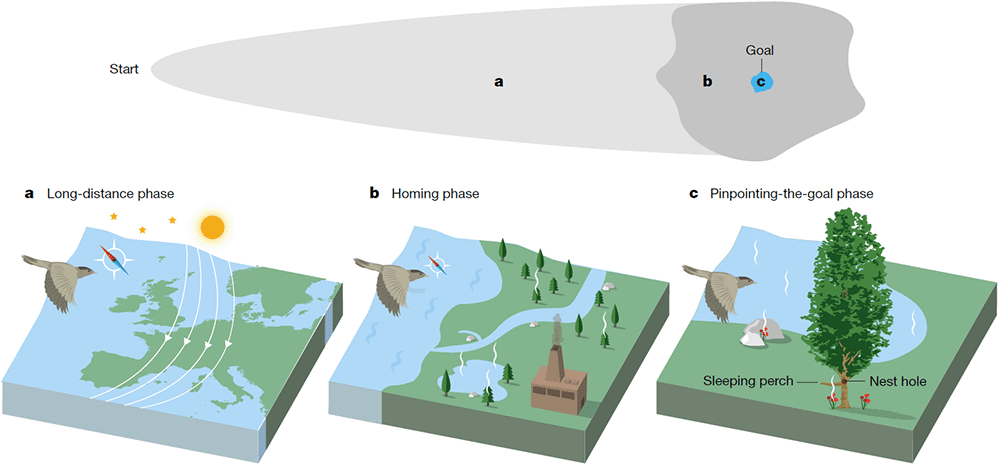
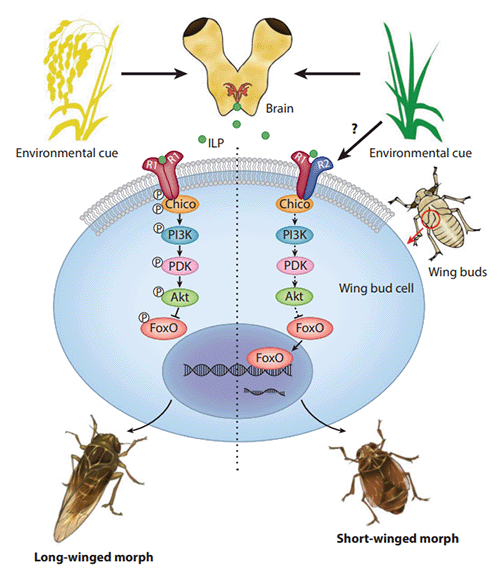
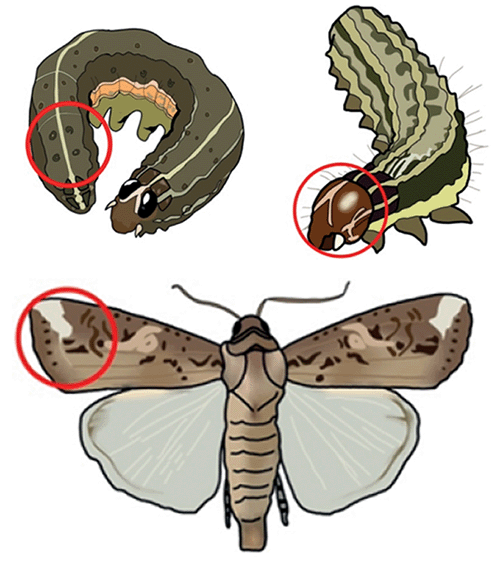


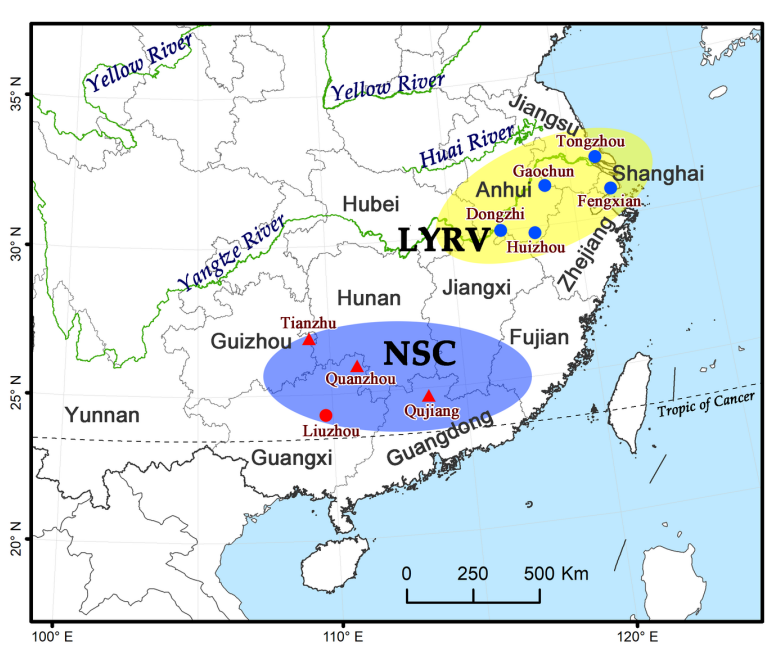
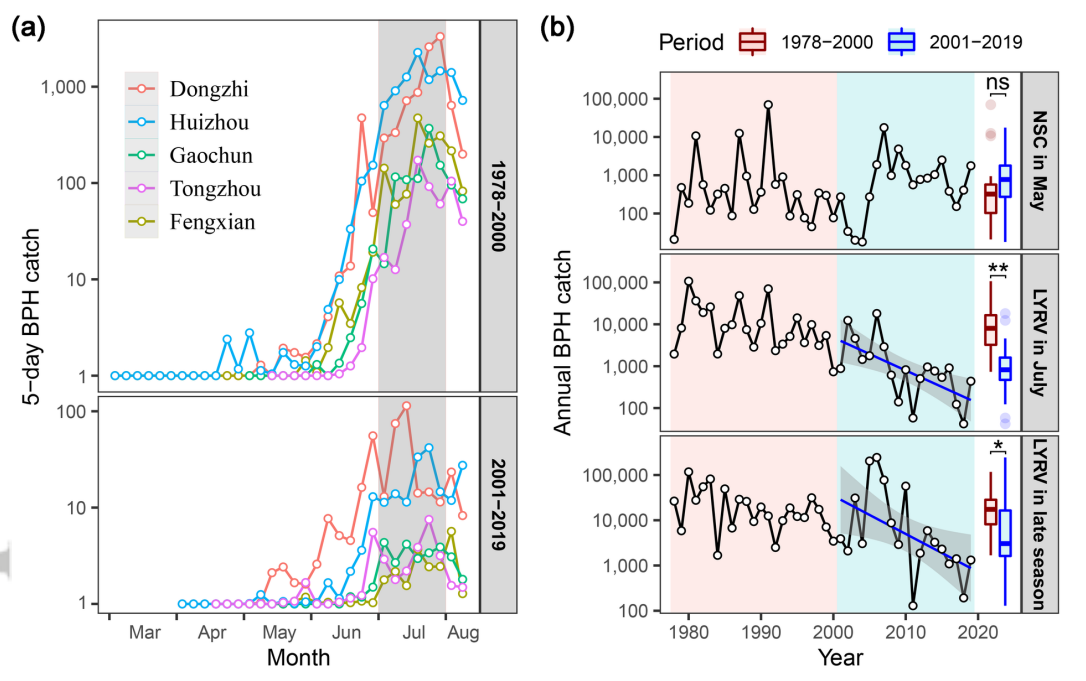
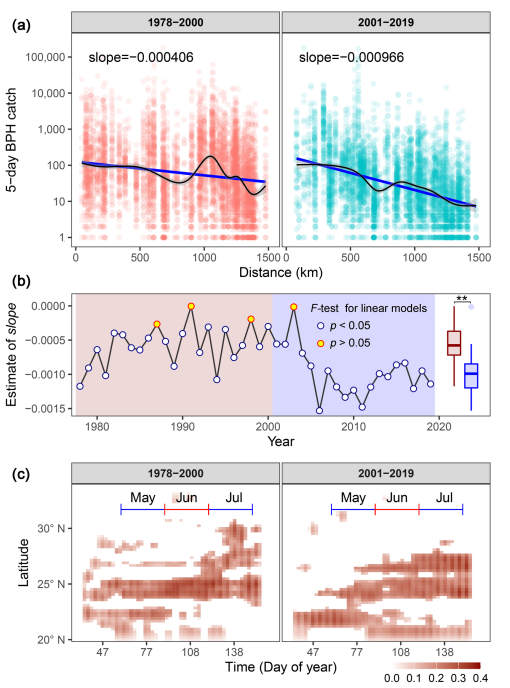

发表回复